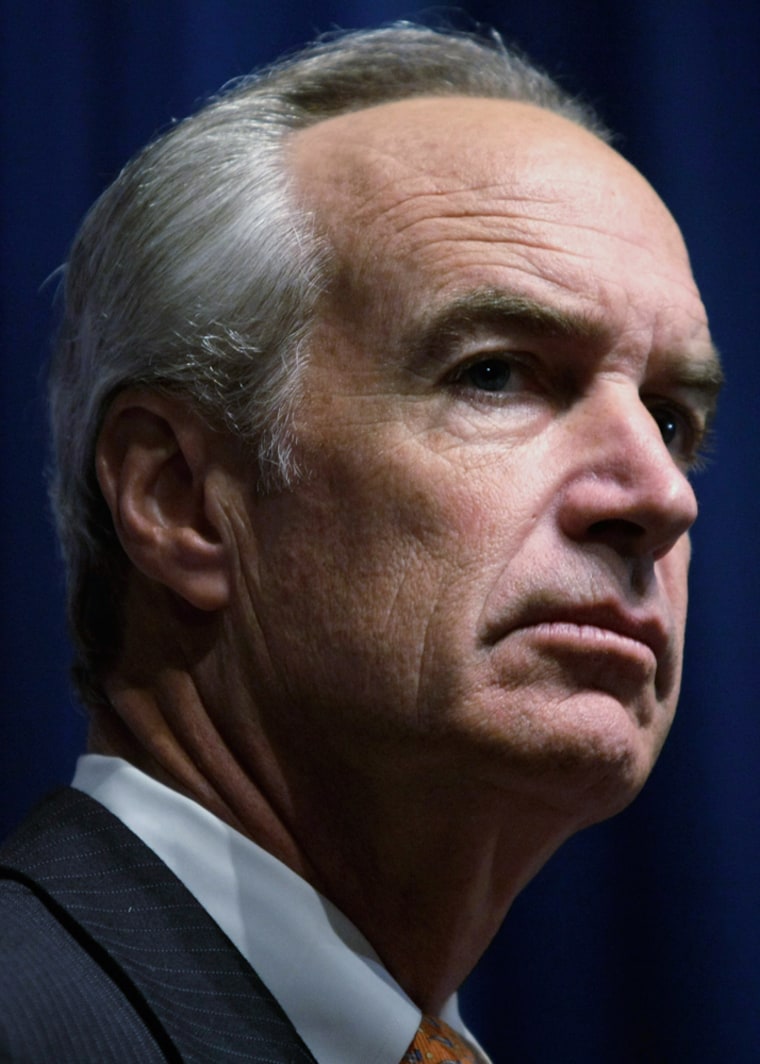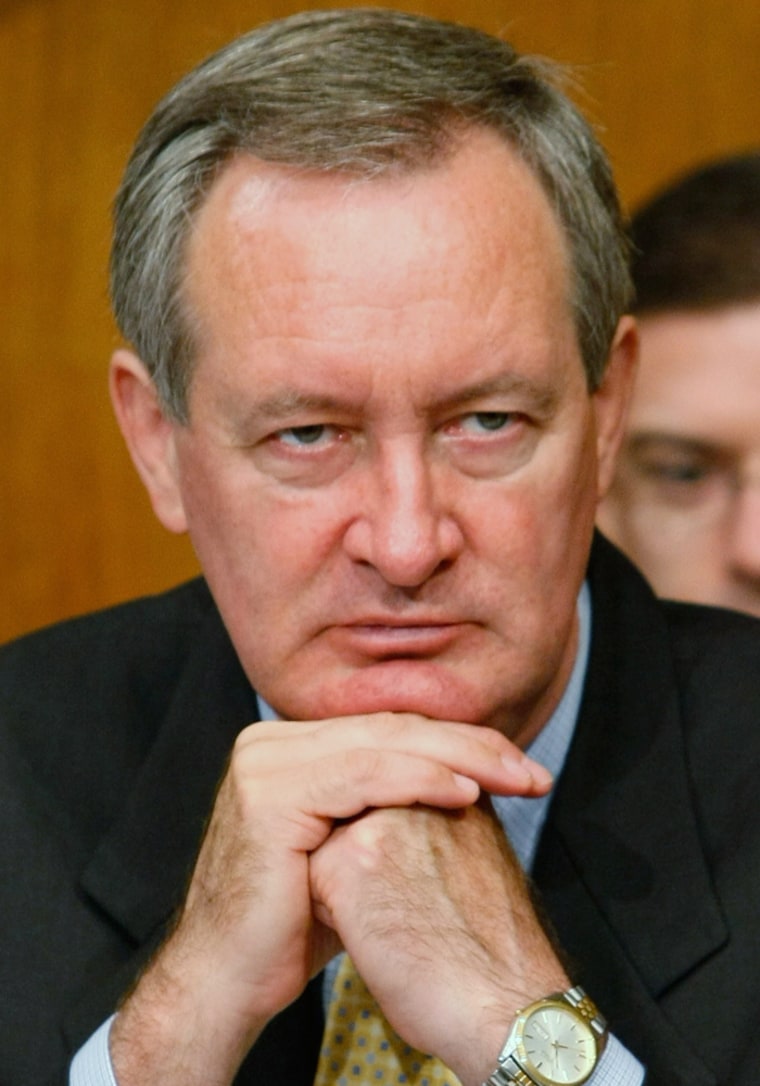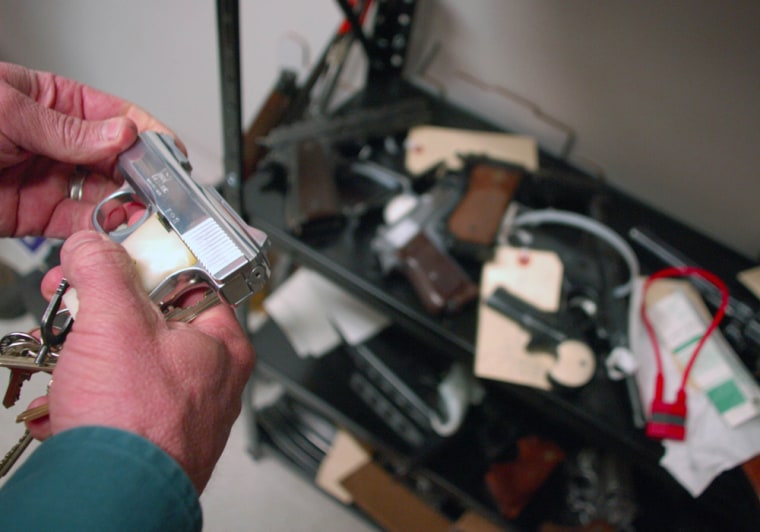In 40 years as a ranger, manager and superintendent of national parks from Alaska to North Carolina, Doug Morris says he never responded to a crime that would have been prevented had a visitor been carrying a concealed weapon. Nor did he hear complaints from gun owners about the rule requiring them to unload and lock away firearms while in national parks.
But Morris, who retired three years ago, says he did see cases where visitors shot wildlife or fired wildly into the night in crowded campgrounds. That’s why Morris and a majority of his fellow members of the Coalition of National Park Service Retirees adamantly oppose a National Rifle Association-led effort to lift the decades-old ban on concealed weapons in the parks. “Nothing is broken about the existing rule,” he said.
But David Yates, a gun-rights activist from Alexandria, Va., says he believes the current rule tramples the Second Amendment rights of all law-abiding Americans to bear arms. Yates, who usually carries a handgun for self-defense where legally allowed, has given up visiting national parks as “a point of honor and principle.”
“I won’t go there because they make a political issue out of preventing somebody from defending themselves,” Yates said.
NPS manages nearly 400 sites
Morris and Yates are on opposing sides in the latest showdown over U.S. gun rights, which would ease the ban on loaded weapons within some of the 58 national parks and 333 other sites managed by the U.S. National Park Service. The dispute involves a proposed rule change that would allow visitors with concealed weapons permits to carry their firearms in national parks, as long as doing so also would be legal under state law. Rifles and shotguns and “open carry” of loaded handguns would remain illegal in the parks.
The NRA’s long campaign to ease the ban appeared to be close to succeeding a month ago, but lost momentum when the Interior Department extended the period for public comments on the plan until Aug. 8.
The NRA sees the extension as yielding to “bullying” by anti-gun members of Congress who are “trying to run out the clock ... possibly until after the election, into a new administration.”
Interior spokesman Chris Paolino said the department wanted to be fair to parties who wanted to comment in light of a Supreme Court ruling in June. That decision affirmed the Second Amendment right of individuals to possess firearms along with the government’s right to regulate them.
Paolino could not say when a final decision would be made.
25-year-old rules
Under rules last updated 25 years ago, visitors to the parks must keep all firearms unloaded and inaccessible, generally locked in a trunk or elsewhere in a vehicle.
When those rules were written, just a handful of states allowed citizens to carry concealed weapons. Since then, with help from campaigns by the NRA and other groups, all but two states now allow citizens to obtain permits to carry loaded, concealed handguns. In many of those, known as “shall issue” states, any citizen who is entitled to own a handgun may obtain a permit to carry a concealed weapon.
Given changing state laws, the NRA for years has said rules for national parks should change so that gun laws are consistent on parklands within each state. But a bigger issue, an NRA spokesman told msnbc.com, is the right that all “law-abiding Americans” have to self-defense.
“Just because you’re in a national park or on federal land doesn’t mean you’re immune to crime,” said Andrew Arulanandam, the association’s director of public affairs.
Opponents counter that the crime rate in national parks is very low. “They’re extremely safe places,” said Bryan Faehner of the National Parks Conservation Association, which opposes the rule change. “You have a higher likelihood of being hit by lighting.”
In recent years, statistics from NPS’ nearly 400 sites, which receive about 275 million visits a year, show a rate of less than one violent crime per 100,000 visits. According to the FBI, in 2006 the average rate of violent crimes in cities across the United States was 474 per 100,000 people.
The low rate does not sway the NRA. “The fact that you can throw a statistic out there is not going to provide any consolation to the family of someone who lost their life in a park,” Arulanandam said, adding that “violent crime rates have decreased (as) … the number of states that have right-to-carry laws has increased.”
Foes of allowing guns in parks point out that the move is opposed by current NPS Director Mary Bomar, seven former directors and the Association of National Park Rangers, among others.
“The No. 1 best argument is that the resource managers are against it,” said Peter Hamm, spokesman for the Brady Campaign to Prevent Gun Violence.
'Resistance to change'
But Yates, a member of the Virginia Citizens Defense League, said he believes the park service’s opposition is a matter of “institutional resistance to change.”
“They simply have a culture that is averse to the concept of self-defense,” he said.
He and the NRA’s Arulanandam said that rangers shouldn’t base their fears on past experiences with guns in parks, since those incidents involved people who were breaking the law to begin with.
Not necessarily, said former Ranger Morris, who served as superintendent of Shenandoah, Sequoia-Kings Canyon and Saguaro national parks during his career. He recounted cases in California where campers, legally transporting guns in vehicles, were frightened by black bears.
“They somehow found their gun, got it loaded and shot the bear,” he said. “In one case, they hit the bear and they did not kill it. The bear just danced around the campground kind of angry until a ranger came and had to kill it.”
Black bears and many other animals in parks hardly ever pose serious threats to humans, Morris said, but “people who visit these parks are really out of their comfort zone and … they perceive threats that just don’t exist.”
Rangers also worry that allowing concealed guns in campgrounds could lead to more human vs. human conflict.
A potential for irony?
Hamm of the Brady Campaign, who once worked at Interior himself, stressed that many sites administered by the NPS are urban and the rule change could have interesting consequences by overriding state laws that work in concert with state right-to-carry permits.
Under Georgia state law, for example, “You can’t bring a gun into the Georgia state Capitol but under this loosening of the laws, I don’t see how you could argue that you wouldn’t be allowed to carry a concealed weapon into the Martin Luther King historic site,” he said. “There’s some irony there.”
Both sides use consistency to make their case, with the NRA saying that one set of rules for all national parks would be easy to follow. But opponents argue that rules still would vary depending on the state the park is in; also, they say, some national parks extend across state borders, creating potential conflicts.
'Open carry' backers would go further
For that reason, some gun-rights activists would like to go even farther than the current proposal. Members of the “open carry” movement believe it should be changed to allow citizens to carry unconcealed guns in parks, a right they say is constitutionally protected. Calling the current proposal a “cruel hoax,” Mike Stollenwerk, a co-founder of OpenCarry.org, said, “You almost have to be a freaking international attorney to figure it out.”
The park service has successfully defended its policies on weapons in parks for years against NRA efforts to change them, shutting the door firmly with a November letter from Director Bomar to a member of Congress: “The existing regulations provide necessary and consistent parameters throughout the National Park System.”
So the NRA went to the top, appealing to Interior Secretary Dirk Kempthorne, a conservative Republican and former governor of Idaho.
In Idaho, where per-capita gun ownership is high and the NRA’s backing is crucial to a politician, Kempthorne had been a solid member of the pro-gun camp before joining President Bush’s Cabinet 18 months earlier.

As a U.S. senator, after receiving nearly $10,000 in campaign funds from the NRA, he voted against the 1993 Brady Bill, which requires a waiting period and background checks for handgun buyers. He also brought Michael Bogert, a onetime assistant general counsel at the NRA, to Interior to act as his counsel.
The NRA enlisted Sen. Mike Crapo, R-Idaho, Kempthorne’s successor as Idaho’s junior senator, to write a letter to the secretary seeking a revision of the gun regulation. The Dec. 14, 2007, letter was signed by 51 senators to whom the NRA has collectively given at least $618,033 in congressional campaign funds in the last 10 years, according to federal election records placed online by the Center for Public Integrity. Those who signed the letter included such pro-gun stalwarts as Republican Sen. Larry Craig, Idaho’s senior senator and a member of the NRA’s board for more than two decades, and Sen. Ted Stevens, R-Alaska, a former NRA board member.
In the hot seat
When Kempthorne didn’t respond, House Republicans put him on the hot seat at a Feb. 14 hearing before the Natural Resources Committee, speaking about Second Amendment rights and asking him about the status of congressional inquiries about the “bizarre” national park gun rule. Kempthorne promised he would reply “very soon.”

Eight days later, Kempthorne wrote to Crapo that the Interior Department would propose changes to national park gun policy as sought by the NRA and members of Congress. The proposal, published April 30 in the Federal Register, said the rules would be changed to “allow individuals to carry concealed weapons in park units and refuges to the extent that they could lawfully do so on analogous state-administered lands.”
Thousands of comments poured in. Interior spokesman Paolino declined to say whether the majority favored or opposed the rule change.
With the quick turn-around between Kempthorne’s February appearance before the House committee and issuance of the proposed new rule, the NRA had been expecting final approval by the end of the year and was dismayed when the comment period was extended.
In a statement on its Web site, the NRA said the anti-gun Democratic chairmen of congressional panels with oversight of the parks, Sen. Daniel Akaka of Hawaii and Rep. Raul Grijalva of Arizona, pressured for the extension in a “blatant and intentional stalling tactic.” Spokesmen for Akaka and Grijalva both denied that was the intent of the extension of the comment period.
But Hamm, the spokesman for the Brady Campaign, said the extension does improve the chances of opponents to keep the weapons ban intact. “The closer you get to a presidential election on an issue like this, the less likely the system is going to want to make a change,” he said.
'Very mainstream'
NRA spokesman Arulanandam, a former executive director of the Idaho Republican Party who once worked for Kempthorne, called the comment extension and threats by other lawmakers to block the rule change by other means disappointing. He also said the NRA, with 4 million members, is “very mainstream” although “there are a lot of people who try to portray us as otherwise.”
Likewise, Faehner, the spokesman for the parks conservation association and himself a former park service employee, said some in the pro-gun lobby depict his side unfairly.
“Our staff and our members, many of them are gun owners and hunters,” he said of the group’s 340,000 members. “We support the Second Amendment and we don’t oppose guns in any way. I was shooting shotguns when I was 10 years old. But there’s a time and place for everything.”
While Arulanandam would not estimate the NRA’s immediate chances of victory on the issue, he said that a defeat this time would not be the end of the organization’s effort. “If you look at our track record, we get what we want, even if it takes a few years,” he said. “We don’t go away.”
Comments on the proposed rule change may be sent by mail to: Public Comments Processing, Attn. 1024-AD70, Division of Policy and Directives Management, U.S. Fish and Wildlife Service, 4401 N. Fairfax Drive, Suite 222, Arlington, Va., 22203. They may be submitted online by following instructions at .
